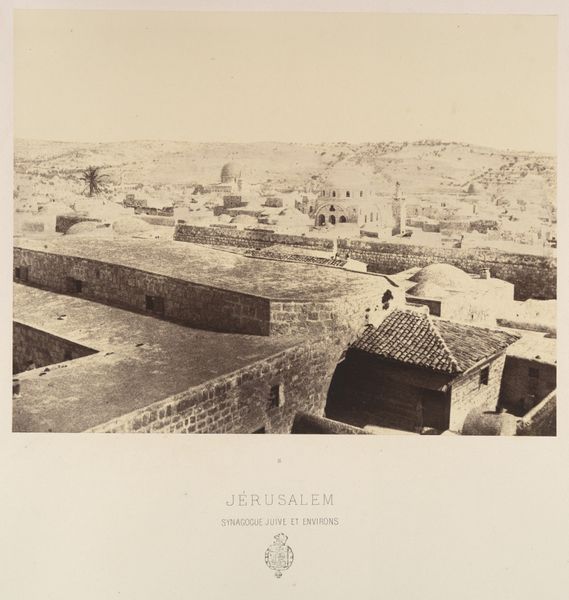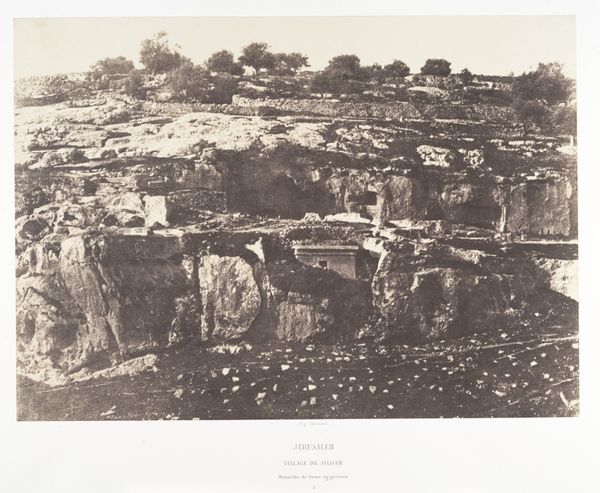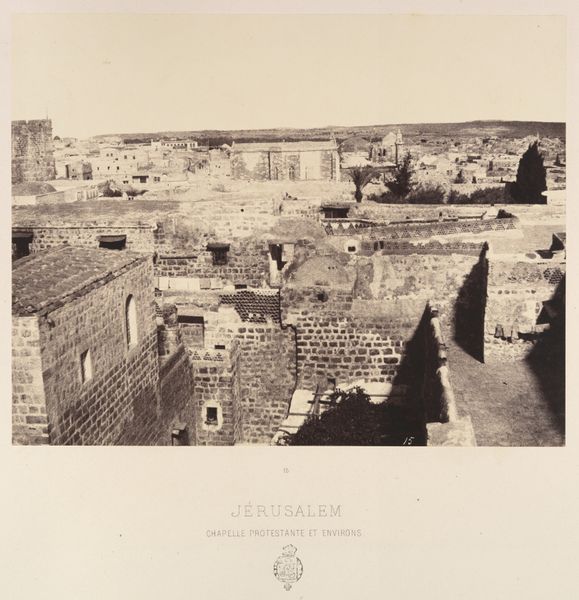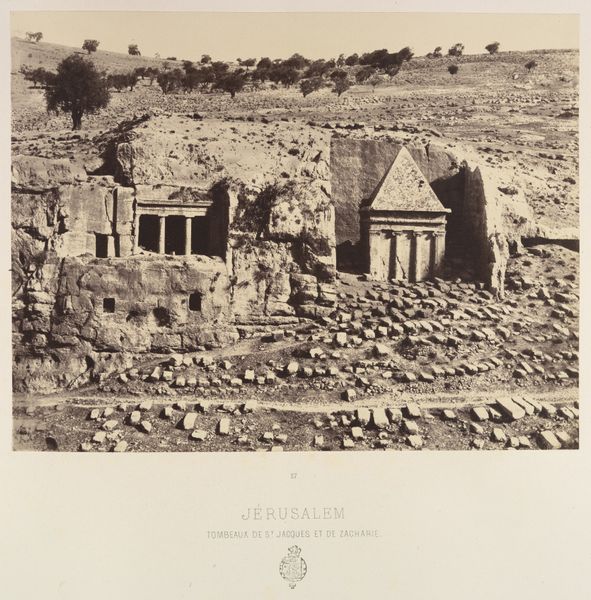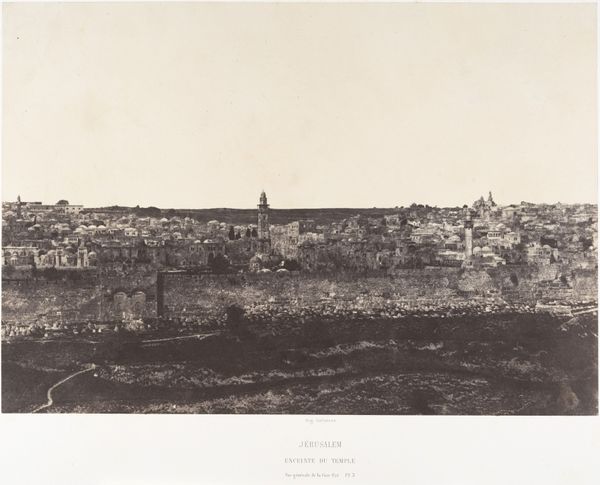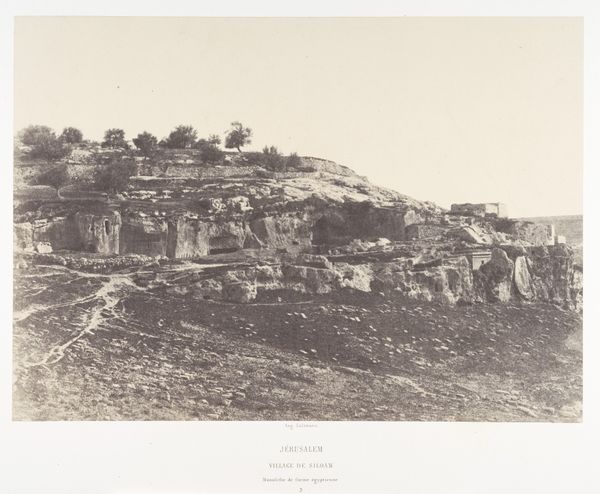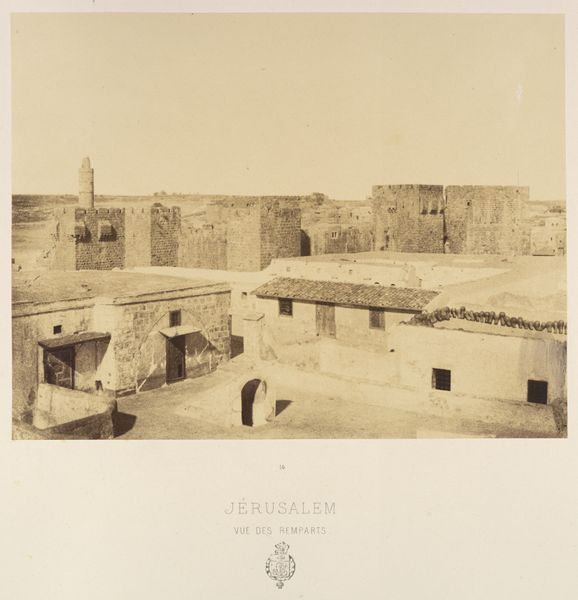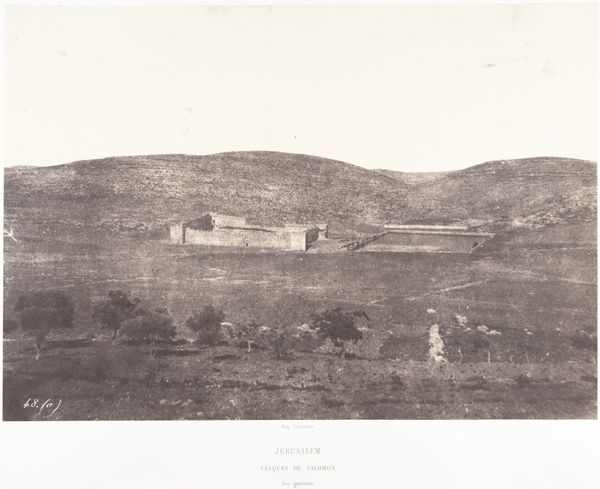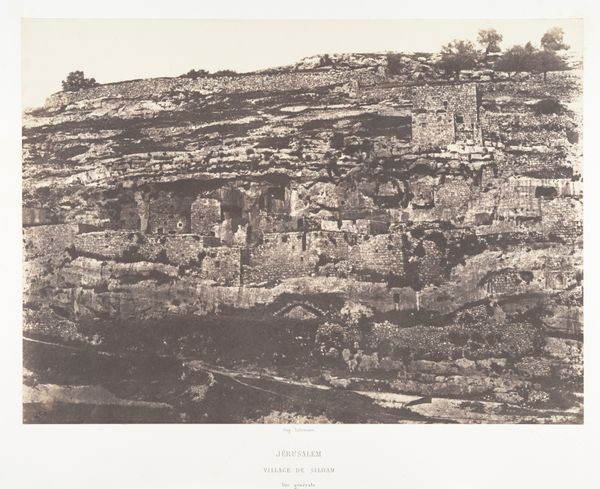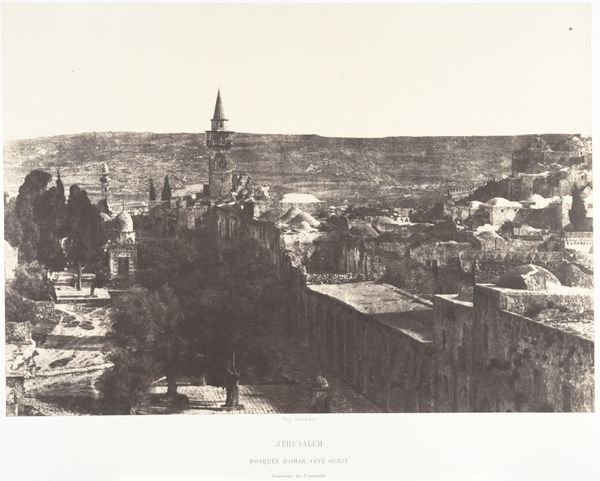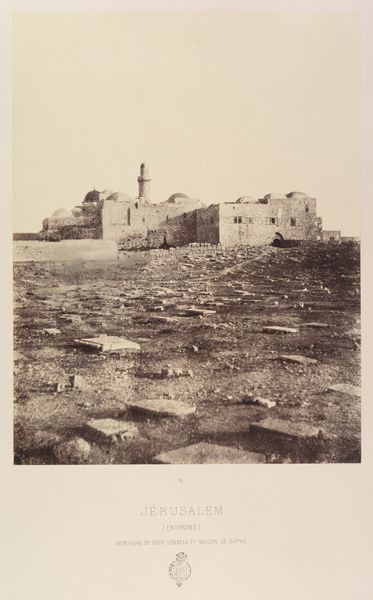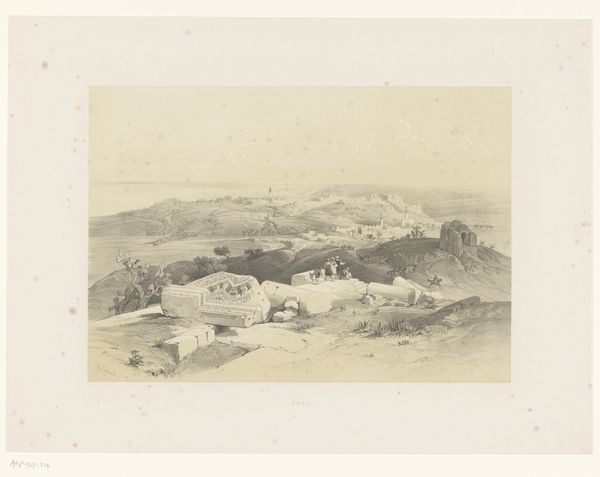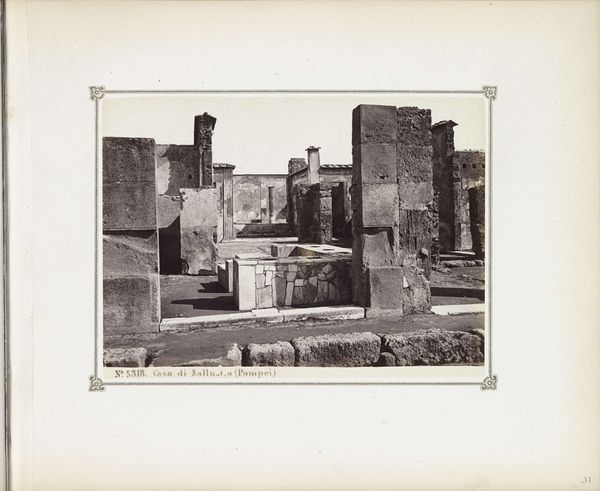
print, photography, albumen-print
#
pencil drawn
#
natural tone
# print
#
landscape
#
photography
#
orientalism
#
cityscape
#
albumen-print
#
building
Dimensions: Image: 8 1/8 × 11 1/4 in. (20.7 × 28.5 cm) Mount: 17 15/16 × 23 1/4 in. (45.5 × 59 cm)
Copyright: Public Domain
Curator: This is "Jérusalem. Tour Antonia et Environs," an albumen print made by Louis de Clercq around 1860. It's part of the Metropolitan Museum's collection. Editor: It strikes me immediately as a document—the light, the tonal range. Very utilitarian in a way, wouldn't you say? Curator: In some respects. De Clercq was part of a wave of photographers who went to the Middle East, keen to capture these ancient sites with the then cutting-edge photographic technology. This photograph offers a seemingly objective view of Jerusalem, focusing on the Antonia Tower. But the very act of photographing such a location at this moment reveals layers of cultural and religious significance. The Tower held immense importance, thought to be where Jesus was judged. Editor: That makes sense, considering the era and the Western fascination with the Holy Land. Albumen prints though, are fascinating from a material perspective. To create this image, a glass plate negative would have been coated with albumen from egg whites and then exposed. That means an incredible amount of labour, and that albumen lends the photograph that characteristic sheen, almost an otherworldliness. It's far from an easy, mechanized process. Curator: Indeed, and the print process imparts its own quality of "preciousness." These photographs fed a desire for authenticity. These weren't imagined depictions—like earlier engravings or paintings. The implicit claim was that 'this is the real place.' And for audiences unfamiliar with Jerusalem, this photograph would shape their visual understanding, imbuing the city itself with symbolic weight. The high vantage point could connote dominance, perhaps echoing imperial ambitions of the era. Editor: Absolutely. Look at the architectural construction, how the light catches the rooftops. De Clercq isn't just documenting; he's selecting a specific perspective, one that emphasizes the city's construction, even. This tells me volumes about material conditions and about the economic realities of the time. Curator: And beyond the architecture, the landscape itself plays a key role. The barren hills behind the city contribute to that sense of austere holiness that the photograph conveys, tying into centuries of visual tropes that represent the sacredness of Jerusalem. Editor: A compelling work—beautiful, yet functional and suggestive. The social layers, the science involved... they continue to challenge assumptions about what constitutes fine art. Curator: Yes, I appreciate that this image embodies both cultural significance and a technical and material journey, making it incredibly relevant today.
Comments
No comments
Be the first to comment and join the conversation on the ultimate creative platform.
